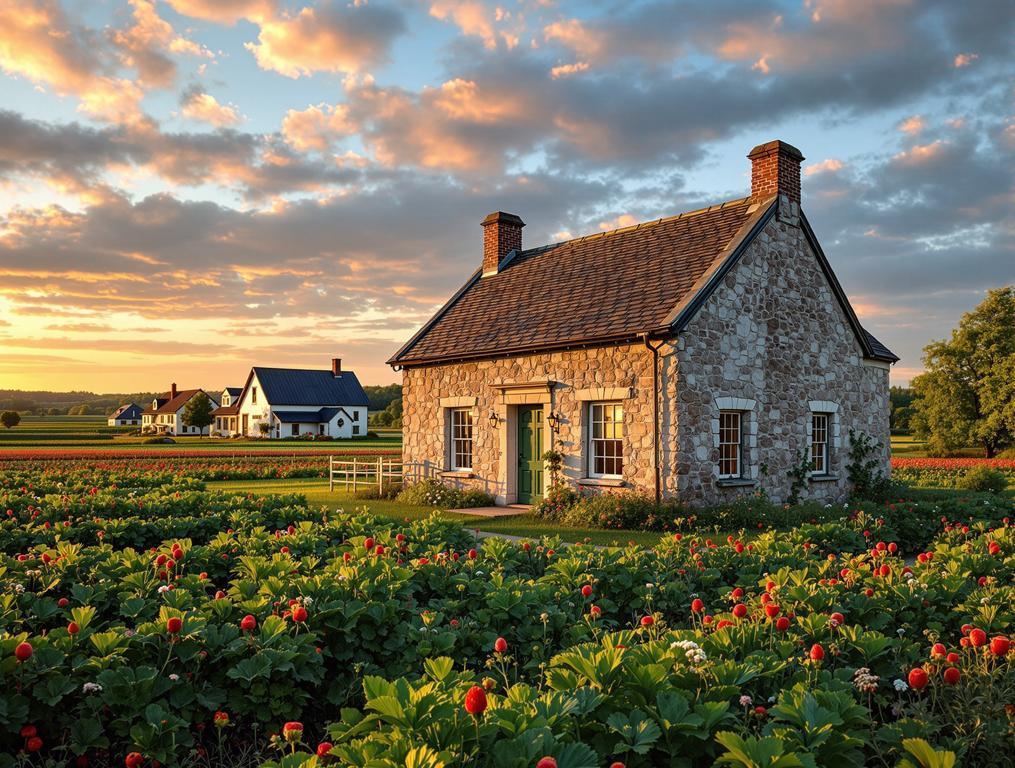I step off the bridge onto Île d’Orléans, a sense of time-travel washing over me as my rental car enters a landscape that feels impossibly preserved. With just 5 kilometers separating this rural enclave from Quebec City’s UNESCO walls, the contrast couldn’t be more striking. Here, 6,726 residents maintain over 2,000 heritage buildings in a living museum of New France that makes Martha’s Vineyard feel positively modern by comparison.
My daughter Emma would call this “the history island,” but as I navigate the winding Chemin Royal that loops the island counterclockwise, I realize it’s much more. The morning fog lifts to reveal stone cottages from the 1700s, their weathered facades telling stories that predate the American Revolution.
How 6,726 People Preserve a Nation’s Birthplace
The numbers here tell an extraordinary story. While Martha’s Vineyard hosts 17,000+ residents, Île d’Orléans maintains its French colonial character with far fewer caretakers. Incredibly, over 50% of the island’s buildings are heritage-classified, creating what locals call “the cradle of New France.”
“We don’t preserve the past – we live alongside it,” a seventh-generation blackcurrant farmer tells me as we sample jam at Confiturerie Tigidou. His family has worked the same land since the 1700s, part of the legacy of 317 founding families who first settled this fertile island.
The island houses 21 historic monuments including the striking dual-towered Sainte-Famille Church, built in 1743 with architectural flourishes that mirror normandy’s rural chapels. Walking its grounds, I’m struck by the quiet authenticity – no gift shops, no crowds, just centuries of unbroken tradition.
At La Ferme le Bunker, I discover perhaps the island’s strangest juxtaposition: a Cold War-era bunker built in 1964, now incorporated into a family farm. Sarah would appreciate the irony – a nuclear shelter now storing pumpkins and strawberries, the ultimate symbol of swords-to-plowshares transformation.
Martha’s Vineyard’s French-Speaking Cousin
While Martha’s Vineyard showcases Americana and celebrity summer homes, Île d’Orléans delivers something far rarer: authentic French colonial heritage without crowds. The island’s 192.8 square kilometers contain cideries, vineyards, and artisanal farms that feel more like Normandy than North America.
“I’ve visited Provence and Tuscany, but this place – with its strawberry fields, stone cottages, and river views – offers the same soul without the Instagram crowds. It’s like finding a perfectly preserved piece of rural France that nobody told you about.”
At Vignoble Ste-Pétronille, I sample blackcurrant wine while overlooking Montmorency Falls. The 110-meter elevation of this western viewpoint creates a perfect panorama where the falls appear even more impressive than from Quebec City’s vantage point.
Unlike Martha’s Vineyard, where connections to colonial heritage often feel staged for tourists, Île d’Orléans’ character emerges organically. Here, a roadside strawberry stand might be run by the fifth-generation family living in the stone house behind it, maintaining farming techniques passed down since the 1700s.
As I drive toward Saint-Laurent, I notice a gallery buzzing with activity. It’s La Marée Montante, celebrating its 25th anniversary in July 2025 with artist meet-and-greets each Saturday. While medieval villages in mainland France might boast older histories, few maintain such intimate connections to their artistic heritage.
What the Guidebooks Won’t Tell You
The island’s best secrets require timing and insider knowledge. Visit Promenade Horatio Walker during low tide when the shoreline path emerges, allowing rare access to the St. Lawrence River’s edge. Unlike Connecticut’s colonial towns where preservation feels museum-like, here it’s simply daily life.
The optimal circuit begins at Saint-Pétronille for morning views, continues to Saint-Laurent for lunch, and finishes at Saint-Pierre where you can visit poet Félix Leclerc’s gravesite. Time your drive for weekday mornings to avoid weekend crowds from Quebec City.
Don’t miss La Forge à Pique Assaut, where blacksmiths create custom ironwork for heritage homes – techniques unchanged since French settlement. Much like Silverton, Colorado’s preservation efforts, Île d’Orléans maintains craftsmanship through living practitioners rather than museums.
Standing at Quai de Saint-Francois as sunset paints the St. Lawrence golden, I understand why the island has remained relatively undiscovered. It offers no single spectacular attraction – instead, it presents an unbroken thread to North America’s French beginnings, preserved not for tourists but for the families who never left.
As Emma would say, some places feel like they’re stuck in time. Île d’Orléans isn’t stuck – it’s exactly where it wants to be, quietly guarding New France’s soul while the modern world rushes by just five kilometers away.
